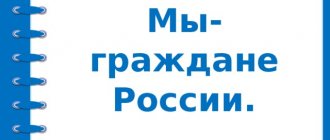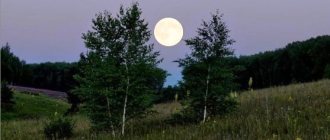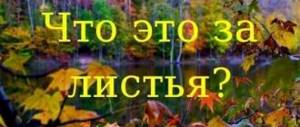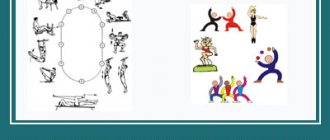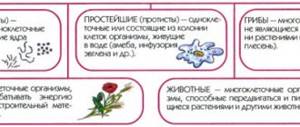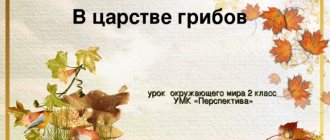LESSON SUMMARY “Sense Organs”
Municipal budgetary preschool educational institution "Kindergarten No. 26 of a combined type" "ABVGDeyka" of the Chistopol municipal district of the Republic of Tatarstan
Miftakhova Razilya Anasovna
Nomination: teaching materials for students at the preschool level of education
Summary of GCD: “Our assistants are the sense organs” -
with elements of research activities
annotation
Goal: development of children's cognitive activity in the process of research activities using personal sensations. Educational objectives: to help gain knowledge about the human senses: vision, hearing, taste, perception, smell; continue to learn how to construct detailed statements; create a positive psycho-emotional mood for the child. Developmental tasks: develop the ability to speak with complete answers, express a personal opinion and put forward a hypothesis, draw conclusions and compare with the results obtained based on personal feelings; Educational objectives: to cultivate the ability to be healthy, to take care of one’s health. Material: opaque containers containing products and substances with different odors (orange zest, garlic) and tastes (bread, candy, lemon); “Magic bag” with objects that differ in shape and surface texture (wooden cube, ball of wool, sandpaper, rubber ball); presentation; magnetic boards, easel. Methods and techniques: talking with children, talking about the senses, looking at illustrations of the senses, experimenting, drawing on a magnetic board and easels. This direct educational activity was tested at the “Week of Open Educational Activities” on the basis of the MBDOU “Kindergarten No. 26 of a combined type” “ABVGDeyka”. Preliminary work included reviewing children's encyclopedias, conversations about caring for the body when meeting with a pediatrician, watching cartoons from the website Edu.tatar.ru If the topic of the educational activity itself is interesting to the child, feasible, the solution brings real benefits, the child reveals the best sides of his intellect, gains new knowledge, skills and abilities. Children's main conclusions are based on their own practical experience, using research activities. Therefore, it is necessary to use practical methods, where exploratory behavior for a preschooler is the main source of obtaining ideas about the world.; when collecting and summarizing materials; when bringing the resulting product to its logical conclusion - presentation of the results obtained in the study. GCD progress: Educator: Guys, an unusual guest came to you today, who has prepared several interesting tasks for you. Doctor Aibolit: Hello, guys. I suggest you go to the Institute of Health today. We will visit different laboratories where research is carried out on human sensory organs. For each correct answer you will receive a prize - a vitamin. If you collect all the vitamins, a surprise awaits you. Educator: Guys, let's remember what sense organs do you know? (children's answers: eyes, ears, nose, tongue, skin). Sense organs help us understand the world around us, and that’s why we call them what? (children's answers: helpers). Doctor Aibolit: Here we are in the first laboratory. And in order to understand which sense organ we are talking about, guess the riddle and draw the answer on your boards: A bump on the face Helps us breathe (Nose.) Children draw a picture of a nose on the boards, and the teacher shows the nose on the screen. Doctor Aibolit: That's right, guys, it's the nose. For the correct answer you receive a vitamin. Educator: Guys, why do we need a nose? (children's answers: breathe, distinguish smells). Educator: That's right, let's breathe with you: Let's inhale deeply through the nose and exhale slowly. Repeat 3-4 times. Did you breathe? Now let's play the game "Miracle - Nose". These jars contain some products. Now, with your eyes closed, try to guess by the smell what is in one of the jars (Children take turns identifying by the smell the contents of the container where they are: garlic, lemon, perfume). Educator: So why does a person need a nose and how does it help us in life? Children: With its help they distinguish odors and breathe. Doctor Aibolit: Well done! So we ended up in the second laboratory. In order to understand which sense organ is being studied here, guess the riddle and draw the answer: Two brothers live on one head They hear everything, but do not see each other (ears) Children draw an image of an ear on the boards, and the teacher shows the ear on the screen. Doctor Aibolit: That's right, guys, these are ears. You get another vitamin. Educator: Guys, why do we need ears? (children's answers: hear sounds). Right, now let's play a little. The game “Recognize by Voice” is being played. Everyone stands in a circle leading in the center. Children, holding hands, walk in a circle and say: Pasha (Masha, Sasha), You are standing in a circle, We call you “Ay!” Close your eyes, find out who called you. The driver with his eyes closed, one of the players calls his name. The driver must determine by voice who called him (the game is played 3 times). Now sit down on the carpet, close your eyes, put your hands on your knees. Be careful. The teacher turns on an audio recording of various sounds. What sounds do you hear? (children's answers). The teacher thanks the children for the correct answers. Educator: So why do people need ears and how do they help us in life? Children: Ears help us hear sounds. Doctor Aibolit: Good guys! Let's move on to the next laboratory. To find out what they are doing here, guess the riddle and draw the answer: Two brothers vigilantly look into the distance (eyes) Children draw an image of an eye on the boards, and the teacher shows the eyes on the screen. Doctor Aibolit: That's right, guys, these are eyes. For the correct answer you get another vitamin. Educator: Guys, why do we need eyes? (children's answers: see, watch TV, read books, etc.). That's right, now let's check if this is true. Everyone, close your eyes and don’t open them until I say (the teacher imitates various movements). Don't open your eyes. Tell me what did I do? Open your eyes. This is what I did (the teacher duplicates the movement shown). Why are eyes needed? (children’s answers, teacher’s generalization). And in order for your eyes to see well, you need to do special gymnastics. Let's do it now. Visual gymnastics: 1. Blink quickly for 10-15 seconds. Repeat 3 times. 2. Rub your palms together and lightly place them on your closed eyes for 30-40 seconds. And open your eyes. Doctor Aibolit: Well done! Let's move on to the next laboratory. To find out what they are doing here, guess the riddle and draw the answer: If it weren’t for him, I wouldn’t say anything. (Language) Children draw a picture of a tongue on the boards, and the teacher shows the tongue on the screen. Doctor Aibolit: That's right, guys, it's a language. You get more vitamins. Educator: Guys, why do we need language? (children's answers: identify different smells). Educator: Let's play. Determine the taste of what you are trying? Children close their eyes, the teacher gives them to try foods that have different tastes. Guys, raise your hands, who had a sweet taste? What do you think it was? (also with salty and sour taste) Educator: And again, none of you made a mistake! You are good at using your senses. Doctor Aibolit: Correct! Well, here we are in the last laboratory. Here they study the sense organ that is responsible for touch. How do you and I feel touch? Children: skin. Educator: Where is the most sensitive skin? (children's answers: on their fingers). Doctor Aibolit: That's right, guys. For the correct answer you get a vitamin. Educator: Let's check the sensitivity of your fingers using a “magic bag”. Take turns placing your hand in the bag and feeling one of the objects in it. Try to guess what you have in your hands. (Children complete the task). Educator: We are given one head, And two eyes, and two ears, And two temples, and two cheeks, And two legs, and two hands. But there is one nose and mouth. And if we, on the contrary, had one leg, one arm, - But two mouths, two tongues, We would only know what we ate and chatted! (S. Marshak.) We must protect our senses and take care of them. Doctor Aibolit: Our tour of the Institute of Health has ended. You have completed all my tasks, and I am giving you the promised surprise (the teacher hands the children bananas). Educator: And now we will smile, we will hold hands tightly, and in parting we will say goodbye to everyone.
Lesson summary on the topic: “Your helpers are the senses”
Lesson on the world around us
Topic: “Your helpers are the senses.”
Tasks:
-form an idea of the sense organs;
- show the role and specificity of the senses;
- learn to observe surrounding objects, analyze and draw conclusions;
- learn to work in pairs;
— develop thinking and enrich the vocabulary of students;
Equipment:
— presentation, multimedia projector;
- items for experiments (three transparent glasses, drinking water, salt, granulated sugar, banana, kiwi, two apples, orange, two opaque bags);
— handout cards for working in pairs.
During the classes.
1.Introduction to the topic. Updating students' knowledge.
Slide 2.
-Look at the pictures. What common? (objects of wildlife)
— What do the objects in the top row have in common? (plants)
— What do the objects in the bottom row have in common? (animals)
-Who's the odd one out in the bottom row? Why? (tiger)
- Today in class we will talk about..., but guess for yourself.
If you take the first letters of the names of the objects shown on the board, then we can read the topic of the lesson.
Slide 3. (When you click the mouse, the letters that form the title pop up
"Sense organs")
-Let's read what happened! (in unison)
-What sense organs do you know?
- Let's do research and find out what sense organs a person has and what they are needed for.
2. Joint discovery of something new.
Research work.
— I prepared several items for research. Here they are on a special table, and you will be the researchers.
Experience 1.
— In front of you are three glasses of drinking water. How can you tell which glass contains salty water, which contains sweet water, and which contains plain water? (children offer to taste it)
- Which sense organ was used to determine the taste of water? (mouth, tongue)
- This is the organ of taste.
What help does this organ provide to a person?
Slide 4. (A contour of the face with a drawing of the mouth and tongue appears on the screen)
Experience 2.
— There are two bags in front of you. How to determine what is on the left and what is on the right. You can't watch! (children suggest by touch).
-Don’t name the object to us right away, but describe its characteristics, tell us what it is.
(oval, rough, hard - kiwi; long, smooth, dense, with a tail - banana0
-Which organ helped you guess what was in the bag? (hand, skin)
-This is the organ of touch
-Why does a person need the organ of touch?
Slide 5. (A contour of the face with a drawing of the mouth appears on the screen, and a palm is added).
Experience 3
-Now let’s play “Blind Man’s Bluff.”
One student comes to the board.
-Close your eyes, don’t peek, hands behind your back.
- Here are two objects (the teacher puts two apples in the student’s hands: one is green, the other is red), determine the color of the object.
- Why can not you?
— Which sense organ will help determine the color of an object? (eyes)
- Look and tell me what color the apples are.
-This organ is called the organ of vision.
-What role does this organ perform?
Slide 6. (A contour of a face with a drawing of a mouth appears on the screen, and eyes and a palm are added).
Experience 4
—Who will be the next explorer? (student goes to the board)
- Turn around and guess. What am I doing. (The teacher claps his hands, or opens the water tap, or plays some musical instrument.)
-Which sense organ helped you guess?
- This is the organ of hearing.
Slide 7 (A contour of the face with a mouth pattern appears on the screen, and eyes, ears, and palm are added).
Experience 5.
- Now everyone close your eyes. Don't peek!
- Without opening your eyes, tell me what you feel? What smells? (The teacher cuts an orange in half and squeezes out the juice. The smell of orange spreads throughout the office)
- With what organ did we feel it?
- This is the organ of smell .
Slide 8. (A contour of the face with a mouth pattern appears on the screen, and eyes, ears, nose, and palm are added).
-This is where our experiments ended.
Let's summarize. What sense organs does a person have? What are they needed for?
Slide 9.
(names of the studied sense organs)
-How many sense organs have we studied? (5)
Conclusion: with the help of the senses, a person learns about the world around him.
Physical education minute.
3.Primary consolidation. (Work in pairs).
- Now take the card that is on your desk and a simple pencil.
The two of you will work together. Look carefully at the card: in the left column there are signs of objects, and in the right column there is an empty field.
-Read the signs of objects (can be in chorus, or in a whisper (at the teacher’s choice)
— In the empty field, draw a sensory organ that helps to recognize these signs.
Slide 10. (sample card)
Let's check how it turned out. Children call - an image appears on the screen with a mouse click.
4. Reflection.
-Circle the odd task numbers.
-Take the first letter from the first words and read what happens.
P
I
T
- This is something strange! What if you add b at the end ? (it turned out to be word five)
-Well done!
— How is the number 5 related to our lesson? (We studied 5 senses).
-Let's name them again.
-Well done! And you worked in lesson 5!
Slide 11. (WELL DONE!)

